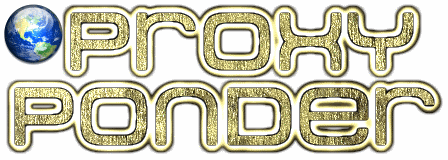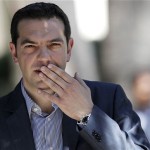Moses the Horned Prophet
When we think of Moses and the Ten Comandments, we tend to think of Charles Heston draped in his robes climbing down from Mt. Sinai cradling two stone tablets in his arms.
In the days of Michelangelo, there was a much different ideal image of Moses that can be viewed at the Sistine Chapel in Rome. A Moses with two horns jutting from his brow.
The depiction of a horned Moses stems from the description of Moses’ face as “cornuta” (“horned”) in the Latin Vulgate translation of the passage from Exodus in which Moses returns to the people after receiving the commandments for the second time. The Douay-Rheims Bible translates the Vulgate as, “And when Moses came down from the mount Sinai, he held the two tables of the testimony, and he knew not that his face was horned from the conversation of the Lord.
” This was Jerome’s effort to faithfully translate the difficult, original Hebrew Masoretic text, which uses the term, karan (based on the root, keren, which often means “horn”); the term is now interpreted to mean “shining” or “emitting rays” (somewhat like a horn).
Although some historians believe that Jerome made an outright error, Jerome himself appears to have seen keren as a metaphor for “glorified”, based on other commentaries he wrote, including one on Ezekiel, where he wrote that Moses’ face had “become ‘glorified’, or as it says in the Hebrew, ‘horned’.” The Greek Septuagint, which Jerome also had available, translated the verse as “Moses knew not that the appearance of the skin of his face was glorified.”In general medieval theologians and scholars understood that Jerome had intended to express a glorification of Moses’ face, by his use of the Latin word for “horned.”
The understanding that the original Hebrew was difficult and was not likely to literally mean “horns” persisted into and through the Renaissance.
Although Jerome completed the Vulgate in the late 3rd century, the first known applications of the literal language of the Vulgate in art are found in an English illustrated book written in the vernacular, that was created around 1050, the Aelfric Paraphrase of the Pentateuch and Joshua. For the next 150 years or so, evidence for further images of a horned Moses is sparse. Afterwards, such images proliferated and can be found, for example, in the stained glass windows at the Chartres Cathedral, Sainte-Chapelle, and Notre Dame, even as Moses continued to be depicted many times without horns. In the 16th century, the prevalence of depictions of a horned Moses steeply diminished.:74
In Christian art of the Middle Ages, Moses is depicted wearing horns and without them; sometimes in glory, as a prophet and precursor of Jesus, but also in negative contexts, especially with regard to Pauline contrasts between faith and law - the iconography was not black and white. However, starting in the 11th and 12th centuries, the social position of Jews, and their depictions in Christian art, became increasingly negative and reached a low point as the Middle Ages ended. Jews became identified with the devil, and were commonly depicted in an evil light, with horns, a libelous stereotype that exists to this day. Hence many people today interpret the horns on Michelangelo’s statue only in a negative light, a situation that was not true in Michelangelo’s day.
It is really just merely a translation mistake? If we look back at the Old Testament, we can discover passages that give us some insight as to what exactly are these ‘horns’ depicted on Moses.
“And the sixth angel sounded the trumpet: and I heard a voice from the four horns of the golden altar which is before the eyes of God.” (Rev 9:13)
Horns are usually associated with alters used in worship with God. Was it possible Moses served as an ‘alter’ to God when they spoke face to face? After Moses acquired this facial feature, the Israelites were fearful and so “he put a veil upon his face.” (Exodus 34:33, D-R). Many refer to these ‘horns’ as horns of light. The veiling of his face demonstrates that his face was an altar or sanctuary of God. Could it be possible that this was just an allegorical reference to Moses’ encounter with God? Though if we take this verse literal, did Moses have actual ‘Horns’ on his head?
The Moon is often represented by two lights, being one light that is gold is from the Sun, and two lights of silver are the moon in ancient times. In the times of ancient Persia, Sun and Moon Gods were paticularly popular and depicted by many different deities throughout this period and beyond. Is it possible that Moses is being referred to as a ‘moon god’ because if the Lord is symbolized by the Sun of golden rays that none can duplicate but only reflect. The moon does not have its own light source it only reflects the Sun’s light. Since Moses is not God himself but did receive special instruction face to face with God therefore he is symbolized by the Moon with two silver ‘horns’ of light.





